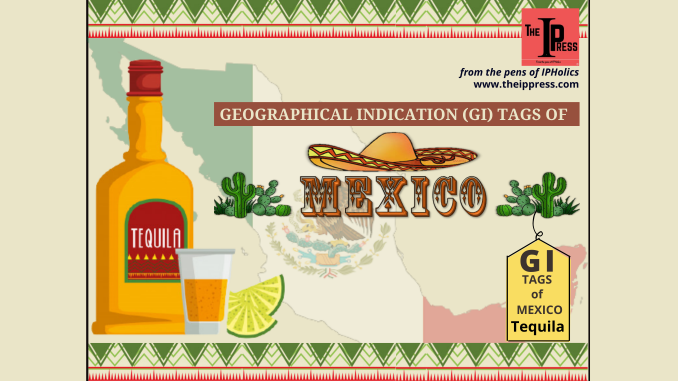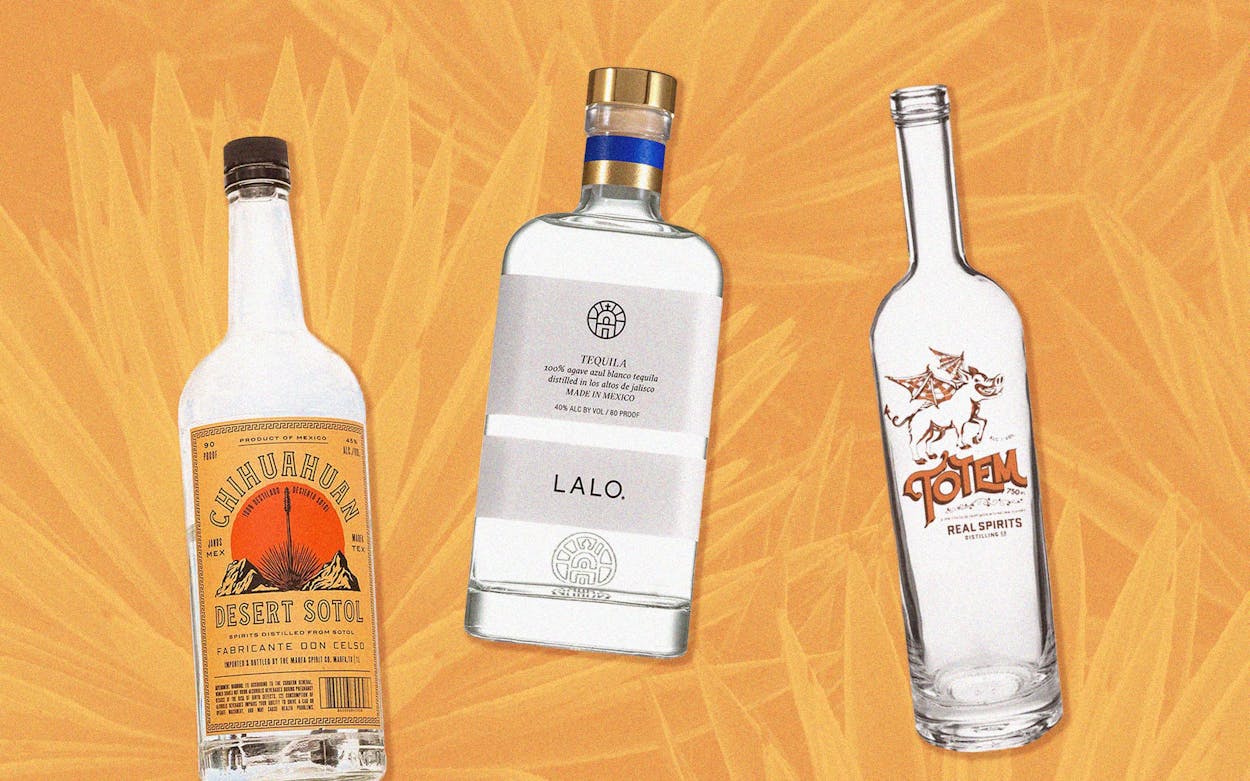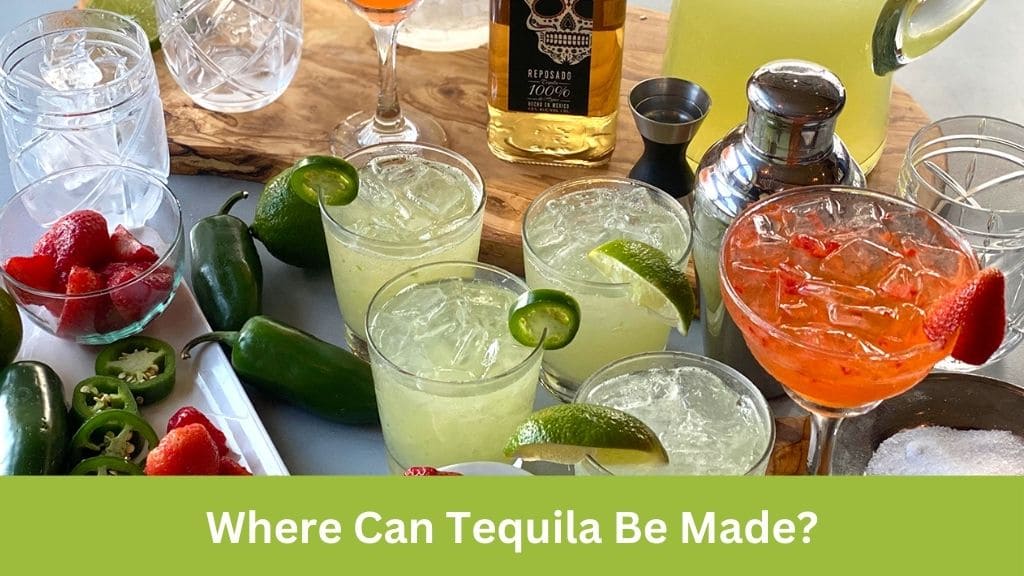Tequila, often hailed as Mexico’s national drink, holds a special place in the hearts and glasses of enthusiasts worldwide. But have you ever wondered where this beloved spirit can actually be made? In this comprehensive guide, we’ll delve into the geographical origins of tequila, uncovering the specific regions in Mexico where this iconic beverage comes to life.
Geographical Indications

Geographical Indications (GIs) are a form of intellectual property rights that are used to protect products originating from a specific geographical area. These indications are granted to products that have qualities, characteristics, or reputations that are essentially linked to their geographical origin.
In the context of spirits like tequila, GIs serve several important purposes:
- Authenticity: GIs ensure that products labeled with a specific geographical indication are genuine and produced according to traditional methods within a defined geographic area. This helps consumers make informed choices and fosters trust in the authenticity of the product.
- Heritage Preservation: GIs play a crucial role in preserving the cultural heritage and traditional production methods associated with a particular geographical area. They protect against imitation and help maintain the unique identity of products tied to specific regions.
- Quality Assurance: Products bearing a geographical indication are often associated with certain quality standards or characteristics that are inherent to the geographic region of origin. GIs provide assurance to consumers regarding the quality and consistency of the product they are purchasing.
- Economic Development: GIs can contribute to the economic development of regions by promoting local industries and supporting rural livelihoods. They create opportunities for producers in designated geographical areas to market their products effectively and differentiate them from competing products in the market.
Overall, Geographical Indications are valuable tools for preserving cultural heritage, ensuring product authenticity, and promoting economic development in regions with unique products and traditions. In the case of tequila, the designation of specific regions in Mexico where it can be produced helps maintain the integrity of this iconic spirit and celebrates the cultural significance of its origins.
The Importance of GIs in the World of Spirits

In the world of spirits, the importance of Geographical Indications (GIs) cannot be overstated. GIs serve as a cornerstone for preserving the authenticity, heritage, and quality of traditional spirits produced in specific geographical regions. Here’s a deeper exploration of why GIs are vital in the realm of spirits:
- Authenticity and Origin Protection: GIs provide assurance to consumers that the spirits they purchase are authentic and originate from a specific geographic area renowned for producing that particular spirit. For example, when someone buys a bottle of tequila labeled with a GI, they can trust that it was crafted using traditional methods in one of the authorized regions in Mexico. This protection against misrepresentation safeguards the reputation of the spirit and ensures consumers get what they expect.
- Cultural Heritage Preservation: Spirits often carry deep cultural significance tied to the regions where they are produced. GIs help preserve the cultural heritage associated with traditional spirits by safeguarding centuries-old production methods, local ingredients, and craftsmanship unique to a specific geographic area. This preservation fosters a sense of pride and identity within the communities that produce these spirits, contributing to the continuity of cultural traditions.
- Quality Standards and Consumer Confidence: GIs are often linked to specific quality standards or characteristics associated with the geographical region of origin. By adhering to these standards, producers maintain the consistent quality and authenticity of their spirits, building trust and confidence among consumers. When consumers see a GI label on a bottle of spirits, they can expect a certain level of quality and adherence to traditional production methods, enhancing their overall experience and satisfaction.
- Market Differentiation and Economic Development: GIs provide a valuable tool for market differentiation, allowing spirits from specific regions to stand out in a crowded marketplace. By highlighting the unique qualities and heritage associated with their geographic origin, producers can differentiate their products and command premium prices. This differentiation not only benefits producers by increasing the value of their products but also contributes to the economic development of the regions where these spirits are produced. GIs can drive tourism, create jobs, and stimulate local economies, thereby supporting the livelihoods of producers and their communities.
The Five Authorized States of Tequila Production

The designation of the five authorized states for tequila production in Mexico is a crucial aspect of the spirit’s regulatory framework and cultural significance. Let’s delve deeper into the significance of each of these states:
- Jalisco:
- Heartland of Tequila Production: Jalisco is widely recognized as the heartland of tequila production, housing the town of Tequila, which lends its name to the spirit itself. The region’s volcanic soil and temperate climate provide ideal conditions for cultivating the blue agave plant, the primary ingredient in tequila.
- Rich Cultural Heritage: Jalisco’s cultural heritage is deeply intertwined with the history of tequila production, with centuries-old traditions shaping the methods and techniques used by local distillers. The region’s landscape, architecture, and festivals reflect its close association with the spirit, making it a focal point for tequila enthusiasts and tourists alike.
- Economic Importance: Tequila production is a significant driver of Jalisco’s economy, providing employment opportunities and supporting local businesses across the supply chain. The region’s tequila distilleries range from small, family-owned operations to large-scale enterprises, contributing to the diversity and vitality of the industry.
- Guanajuato:
- Diverse Agave Cultivation: Guanajuato contributes to the diversity of tequila production by cultivating blue agave in its fertile valleys and hillsides. While not as prominent as Jalisco, Guanajuato plays a vital role in supplying agave for tequila production and enriching the flavor profiles of the spirit.
- Heritage of Craftsmanship: Like Jalisco, Guanajuato boasts a heritage of craftsmanship and tradition in tequila production. Local distillers draw upon centuries-old techniques passed down through generations, infusing their tequilas with a distinct regional character.
- Cultural Significance: Tequila holds cultural significance in Guanajuato, where it is celebrated as a symbol of Mexican identity and pride. Festivals, tastings, and events showcase the region’s tequila heritage, attracting visitors from around the world to experience its flavors and traditions.
- Michoacan:
- Terroir and Flavor Profiles: Michoacan’s diverse terroir and microclimates contribute to the unique flavor profiles of tequilas produced in the region. From the volcanic soils of the Trans-Mexican Volcanic Belt to the highlands and lowlands, Michoacan offers a rich tapestry of agave cultivation environments.
- Traditional Production Methods: Michoacan’s tequila producers uphold traditional production methods, emphasizing craftsmanship, quality, and authenticity in every bottle. The region’s distilleries blend innovation with tradition, resulting in tequilas that capture the essence of Michoacan’s heritage.
- Cultural Heritage: Tequila is deeply rooted in Michoacan’s cultural heritage, with rituals, music, and folklore celebrating the spirit’s role in local traditions. Michoacan’s tequila culture reflects the resilience and ingenuity of its people, who have preserved and enriched the legacy of agave cultivation and distillation.
- Nayarit:
- Emerging Tequila Region: While Nayarit may be lesser-known compared to Jalisco and Guanajuato, it is emerging as a promising region for tequila production. The state’s coastal plains and mountainous terrain offer diverse agave-growing conditions, contributing to the development of unique tequila expressions.
- Innovation and Experimentation: Nayarit’s tequila producers embrace innovation and experimentation, exploring new techniques and varieties to create distinctive tequilas that reflect the region’s natural beauty and cultural diversity.
- Cultural Integration: Tequila production in Nayarit is deeply integrated into the state’s cultural fabric, with traditions, festivals, and gastronomy celebrating the spirit’s role in local identity. Nayarit’s tequila heritage is a testament to the region’s resilience and adaptability in the face of changing trends and tastes.
- Tamaulipas:
- Northeastern Tequila Production: Tamaulipas, located in northeastern Mexico, represents the easternmost boundary of authorized tequila production. While less prominent than its western counterparts, Tamaulipas contributes to the diversity of tequila styles and expressions available in the market.
- Agave Cultivation Challenges: Tamaulipas faces unique challenges in agave cultivation due to its semi-arid climate and rugged terrain. Despite these obstacles, local producers have overcome adversity through innovation and determination, producing tequilas that showcase the region’s resilience and ingenuity.
- Cultural Identity: Tequila holds a special place in Tamaulipas’ cultural identity, serving as a symbol of tradition, hospitality, and celebration. The state’s tequila producers honor this heritage by crafting tequilas that embody the spirit of Tamaulipas, drawing inspiration from its landscapes, history, and people.
Beyond Tequila: Agave Spirits and Mezcal

Beyond tequila, the world of agave spirits encompasses a diverse array of traditional Mexican beverages, with mezcal standing out as a prominent counterpart. Let’s explore more deeply the realm of agave spirits and mezcal:
- Agave Spirits:
- Broad Category: Agave spirits, also known as agave-based distillates, represent a broader category of alcoholic beverages made from various species of the agave plant. While tequila is the most well-known agave spirit, there are other regional variations and types that fall under this umbrella.
- Geographical Diversity: Unlike tequila, which is strictly regulated and must come from designated regions in Mexico, agave spirits can be produced across the country. This diversity allows for a wide range of flavor profiles and styles, each influenced by the unique terroir and agave species used in production.
- Cultural Significance: Agave spirits hold significant cultural importance in Mexican traditions and rituals, playing a central role in celebrations, ceremonies, and social gatherings. From the ancient civilizations of Mesoamerica to modern-day festivals, agave spirits are deeply ingrained in the cultural fabric of Mexico.
- Mezcal:
- Distinctive Character: Mezcal stands out as a distinctive agave spirit known for its smoky flavor and artisanal production methods. Unlike tequila, which is primarily made from blue agave, mezcal can be produced from various species of agave, each imparting unique characteristics to the final product.
- Regional Variation: Mezcal production is centered primarily in the state of Oaxaca, where traditional mezcaleros (mezcal makers) craft the spirit using age-old techniques passed down through generations. However, mezcal can also be produced in other states across Mexico, each contributing to the diverse landscape of mezcal production.
- Traditional Production Methods: Mezcal production involves a labor-intensive process that begins with harvesting mature agave plants, known as piñas, from the wild or cultivated fields. The piñas are then roasted in earthen pits, imparting a smoky flavor to the agave before being crushed, fermented, distilled, and aged, resulting in a complex and nuanced spirit.
- Cultural Heritage: Mezcal embodies the cultural heritage and craftsmanship of the communities where it is produced, with each batch reflecting the unique terroir, traditions, and expertise of the mezcalero. From the mystical landscapes of Oaxaca to the rugged terrain of Durango, mezcal represents a connection to the land and a celebration of Mexican identity.
Conclusion: Celebrating Mexico’s Spirituous Heritage
In conclusion, the geographical origins of tequila are deeply rooted in the cultural and environmental diversity of Mexico. From the rugged landscapes of Jalisco to the verdant valleys of Oaxaca, each region contributes its own distinct flavors and traditions to the world of agave spirits. By understanding and appreciating the geographical indications that define tequila production, we can embark on a flavorful journey through Mexico’s rich spirituous heritage. So, the next time you raise a glass of tequila, remember the terroir and traditions that have shaped this iconic spirit into what it is today.
I’m Chen Mina, from Vol de Nuit, who has a special passion for bartending, especially mixing wine, beer, and cooktail. Here you will find content about alcoholic beverages, I will bring you knowledge that few people know about this drink.





